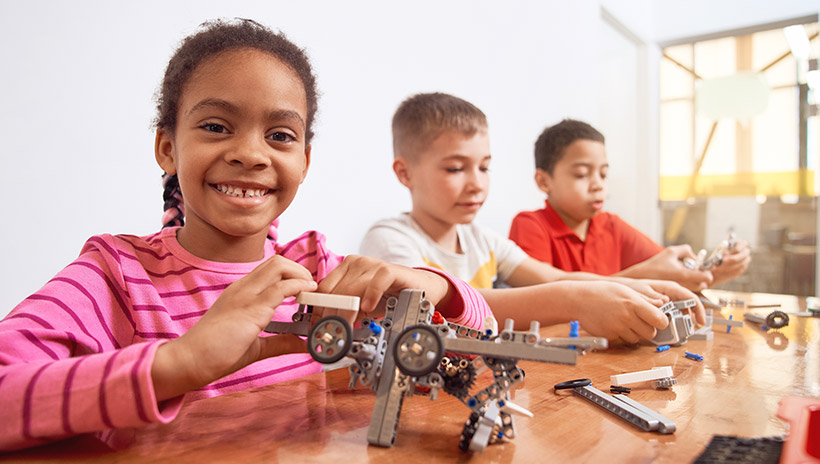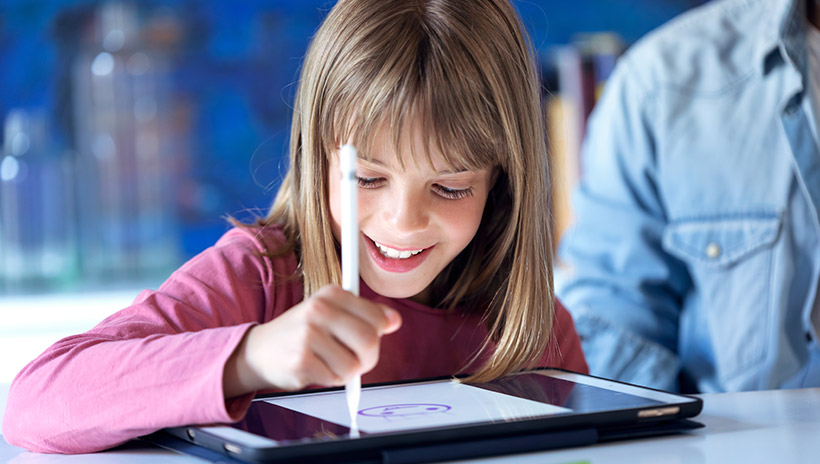In preparing students for the essential skills that they need for the future, we have many opportunities to bring different methods and digital tools into our classroom space. When considering the skills that our students will need, I refer to the skills outlook from the World Economic Forum to stay up to date. Some of the top 10 skills that will be needed include collaboration, communication, critical thinking, creativity, problem solving, and emotional intelligence. These essential skills, sought by employers, directly correlate to the five competencies of social-emotional learning (SEL): self-awareness, social awareness, self-management, relationship building, and decision-making.
In planning for our students, it’s good to have a variety of options that we can put into place right away, whether learning in person, hybrid, or virtually. We can use methods like project-based learning or activities like scavenger hunts, use learning stations, or rely on different digital tools that enable us to facilitate more interaction with and between students and help to foster the development of essential SEL skills.
Some questions that came up during my “Chart a New Course: SEL & Teaching Essential Skills for Tomorrow’s World” workshop include: How can I help teachers to promote SEL in the classroom? How do I help students to enjoy learning? What are some tools to promote communication and collaboration?
I always like to start with three methods.
3 Methods for Promoting SEL in the Classroom
1. Learning Stations
Using learning stations provides many benefits for students and teachers. It is an opportunity for students to engage in different types of activities whether using traditional materials or using digital tools like games and interactive lessons. They engage in more social learning. This enables educators to work in a more personalized way with each student and develop greater understanding of each student’s progress as well as the class’s progress along their learning journey so that together we can plan the next steps. In addition to these benefits, students feel more connected and part of a classroom community by engaging in activities with their peers while building self-awareness, social awareness, and definitely the building of relationships.
2. Project-Based Learning
With methods like project-based learning (PBL) or problem-based learning, students drive their own learning, leading them to become more independent and have choices that lead to more authentic and meaningful opportunities. It helps them to develop self-management skills in particular when setting goals for their research and dealing with any that come with independent work like PBL. Depending on the type of learning that they engage in, it helps them to develop greater social awareness as they can learn about issues that are affecting people globally and look to solve them on a local scale. Whether they work independently or as part of a small group, they will still engage in relationship building and decision-making as they craft their own learning journeys.
Check out Tract, a peer-to-peer program for students ages 8 and up in which students can work through on-demand classes or become creators of their own content. With Tract, educators support SEL and self-efficacy through student-directed, project-based learning through the enrichment clubs and on-demand classes available.


3. Scavenger Hunts
Creating a scavenger hunt is great for reviewing the content and, in my experience, helpful for times when perhaps student engagement is decreasing. Facilitate more interactive scavenger hunts with options like Flipgrid for a Fliphunt, Wakelet, Buncee, or using the Goose Chase app. In addition to better understanding the content, students have opportunities to develop the essential SEL skills as they brainstorm ideas, they create, they problem solve the challenges, and they collaborate with their peers. All of this helps with promoting a stronger and supportive classroom community and building their confidence in learning.
Finding Some Digital Tools to Build SEL Skills
Especially during the past school year, digital tools helped to facilitate learning in many different settings. By choosing one or two versatile tools that promote choice for students, we empower them to become creators rather than simply consumers. In response to the question “How do I get started with SEL?” I recommend checking out Buncee, a multimedia creativity presentation tool that designed an SEL toolkit. It provides what educators need to get started in their classrooms with ideas, research, and many ready-to-use template activities for grades K–6 and 7–12.


Ideas for Digital Tools:
- Multimedia presentations: Students enjoy using tools that offer multimedia options and libraries full of choices in characters, backgrounds, animations, and more to tell their story. Some of our favorites include Buncee, Book Creator, and Story Jumper.
- Digital portfolios: Spaces offers a digital portfolio platform that assists teachers to better understand students, their interests, and needs in learning. Digital portfolios help students to develop SEL skills of self-awareness and self-management and are so beneficial for students to chart their growth and see the process of learning.
- Interactive lessons: Keep students engaged through a variety of activities that help students to focus on the content through collaboration, discussion, or tools that promote creativity in learning. Explore Google Jamboard, Padlet, Formative, and Nearpod, which help to connect students in learning, whether in-person or remote.
We definitely don’t have any shortage of methods or tools to choose from, but it’s important to focus on the why behind what we choose. The use of digital tools promotes collaboration, communication, creativity, and many more of the essential skills while also boosting student engagement in learning as they have the power of choice in how to share what they have learned.
For more from Rachelle Dené Poth on SEL, check out the Chart a New Course: SEL & Teaching Essential Skills for Tomorrow’s World workshop and more in our SEL Toolkit!
See also:

